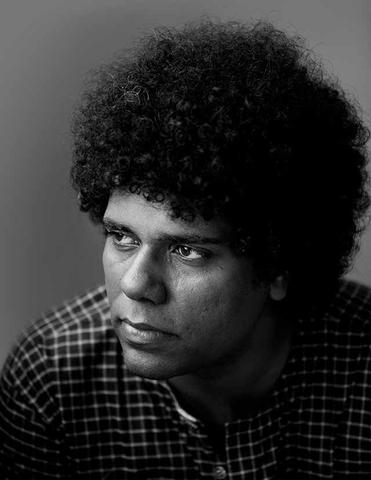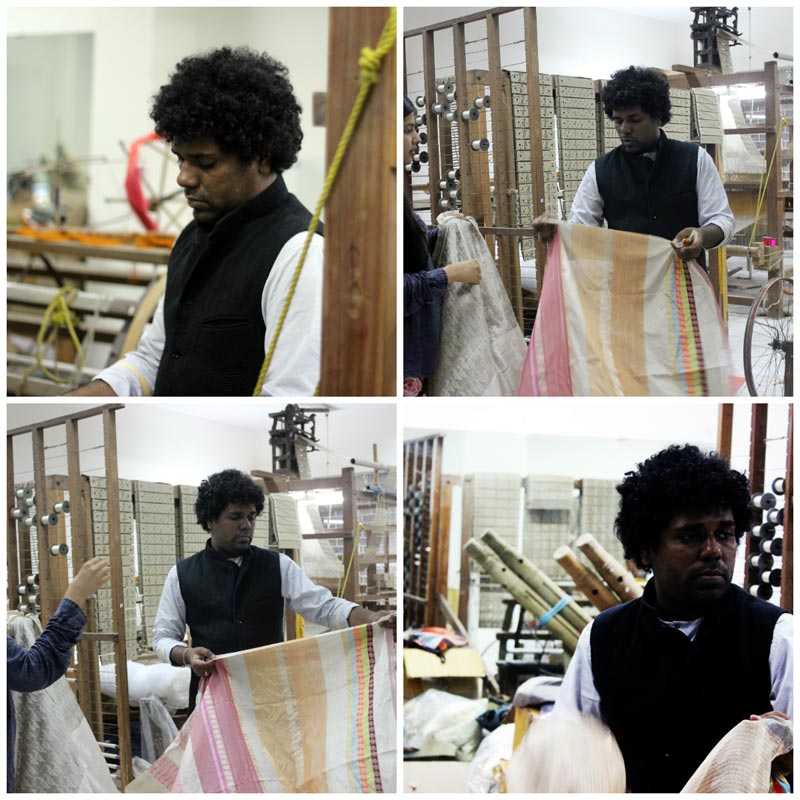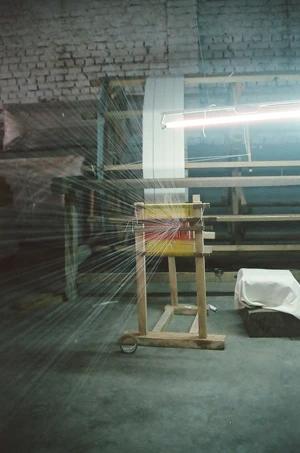

Image Source: Faionforwardtrends.com
Designer Gaurav Jai Gupta (Founder, Aakaro) in conversation with Director,Ms. Akshara Dalal
“Look within, seek within”
As part of our continuous commitments of pushing the boundaries of conventional education, making the process of learning more fulfilling, intriguing and holistic all our students, we have recently undertaken a series of web-sessions featuring prominent personalities including renowned designers, industry leaders and experts in post-pandemic world.
One of the most innovative personalities of the contemporary fashion world in India, designer Gaurav Jai Gupta’s foray and eventual success in the industry is rather ‘accidental’ followed by an organic journey, according to the designer himself. Armed with a strong sense of well-developed aesthetic sensibilities, an innate desire for experimentation, consistency and an unique take on use of unorthodox materials for weaving, the designer presented anunparalleled perspectivewith his creations that is rooted in tradition, yet unapologetically bold and intriguing in nature.
From the very beginning, the designer was more inclined towards the experimentations, conceptual developments,theoretical aspects and the futuristic investigations, within the paradigm of fabric design, instead of craftsmanship, and technical details like sewing. And the fact that his extended family was already associated with the fabric industry (manufacturing & Exports), further helped him explore his continuous quest of innovation using unconventional materials. It is said that when one door closes others, open up. And it wouldn’t be more appropriate in his case. Whereas lack of funding, resources can be restrictive for many of his contemporaries, he was able to use it successfully in his advantage by choosing to use materials (including wastematerials such as plastic) that were easily available but had been ignored consciously, instead of spending money on acquiring traditionally preferred materials. One of the earliest examples could be traced back to creating a fabric using the reels out of old cassettes. Naturally, for him sustainability was not a novel concept, he would associate with later on, rather it was an integral part of his core ideology and the creative process right from the beginning.
Image Source: Faionforwardtrends.com

His work has always been process-centric, based on research, characterized by trademark boldness (very often, way out of comfort zone), innovation and yet rooted in tradition with a twist.To be more specific, he favors creations that are ‘not simply Indian’, instead preference is given to designs that are authentic, intriguing, unique and relevant in our time, most importantly ‘not very safe’. Although the concept of metallic yarn was not entirely new, but in India he pioneered the technique of metallic fabric, starting with copper,derived out of electrical wires.. that became fashionable in the past couple of years.
Speaking about engineered fabrics, he emphasized the use of bio-tech in addition to the traditional smart fabrics. He believes the sooner we adapt to the idea of technology inspired from (or based on) nature, the greater are our chances for recovering, surviving through challenges like covid-19 and others that are yet to come. Study and exploration of smart fabrics (technologies) can open many doors (including the automobile, aviation, infrastructure industries) for new graduates, which were completely closed off to design students until a few years ago. In fact, there are quite a few initiatives from the Gov. of India as well encouraging students to investigate and actively explore the exciting new world of smart fabrication.
For a post-pandemic world, though, he does not strongly believe that the market will go through a radical change and especially for his line of work, since ‘Aakaro’ has already been working with the sustainability right from the days of its inception, except for paying more attention to sustainability. And he anticipates, people will become more mindful when it comes to consumption, buying less, avoiding excess (even for designers).. there could be a potential shift towards quality over quantity, to celebrate individuality, coming out of the shadows of Bollywood.
Although his creations, as we have come to experience them, may initially appear as non-traditional, non-Indian, not aligned with the conventional motifs/ patterns that we generally associate with, he insists, quite logically, on the fact that Indian-ness doesn’t simply lie in the form of representation. Its rooted deeply into the materiality, the processes, use of tools, sourcing, ideologies and various other interpretations that go way beyond the commercially accepted, the populist culture of appearances. He values fresh ideas, inspiring and authentic work rather than depending on the heritage or revival works alone, which is predominant throughout the industry.
For him inspirations mostly come from within, derived from a place of a profound introspection influenced by contemporary events, music, movies, visuals with lasting impacts. Even external inspirations have certain ways of blending in with his inner quest. And what follows afterward is more often an amalgamation, that has its roots deeply intertwined with his core convictions, ideologies, or a specific state of mind and the thorough observations of his immediate surroundings, experiential spaces.
Image Source: Faionforwardtrends.com

For recent graduates and entrepreneurs, he has a couple of advice (that could not be more accurate, especially for a challenging time like this) including restrictions on expenses, taking it slow, exploring new ideas, introspect (now that they have the luxury of time) or perhaps taking a break, going into more research, so that when the economy finally opens up they can better position themselves to take advantage of the new opportunities. For entrepreneurs and the retail industry, he shared that the field offers a great scope of fashion designing careers.
He focused on developing entrepreneurship skills in fashion designing as through that not only will you have name, fame, and money, but also you will be adding on to the scope of fashion designing to others to work for you and inspiration to younger students to believe in their dreams.